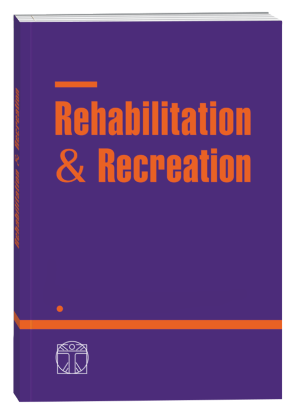THE STATE OF THE HUMAN IMMUNE SYSTEM AMID VARIOUS TYPES OF PHYSICAL EXERTION
DOI:
https://doi.org/10.32782/2522-1795.2022.12.11Keywords:
physical exercises, immune system, therapeutic exercisesAbstract
The problem of the correlation between physical activity and human immunity has always been in the view of the attention of scientists, but great clarity in the study of the effect of physical exercises on the immune system has been introduced in recent decades. The appearance of a new infection, which caused a pandemic, forces to re-examine some regulations regarding athletes. The purpose of the review is to discuss advances in the study of immunity in people who are engaged in both professional sports and regular non-strenuous exercise. The work shows that changes in the immune system in response to physical exercises depend on the degree of intensity, severity and duration of the impact of physical exertion. Moderate physical activity is considered by many authors as an important stimulator for the immune system, which leads to an increase in the exchange of leukocytes between the bloodstream and tissues, an improvement in the metabolism of glucose and lipids, and has a direct anti-inflammatory effect. Such exercise-induced effects may contribute to counteracting the development of chronic metabolic diseases, reduce the process of systemic inflammation, and may also increase the specific response and increase the production of antibodies to vaccination. A slightly different reaction of the immune system occurs during long-term and intense physical exertion in athletes. Thus, damage to muscle tissue during intense physical exertion, a profound change in the metabolism of metabolites, lipid mediators and proteins can cause temporary immune dysfunction due to a decrease in the metabolic capacity of immune cells. A decrease in immune protection in athletes after intense physical activity can lead to an increase in the body's susceptibility to acute viral diseases. Of concern is that reports show a significant and variable proportion of athletes infected with COVID-19 who experienced prolonged post-Covid syndrome. Therefore, the possibility of developing complications should be taken into account during training.
References
Nieman, D. C., & Wentz, L. M. (2019). The compelling link between physical activity and the body's defense system. Journal of sport and health science, 8(3), 201-217.
Horoshko, O. I., Horoshko, A., Bilyuga, S., & Horoshko, V. (2021). Theoretical and methodological bases of the study of the impact of digital economy on world policy in 21 century. Technological Forecasting and Social Change, 166, 120640.
Hoffman-Goetz, L., Thorne, R. J., & Houston, M. E. (1988). Splenic immune responses following treadmill exercise in mice. Canadian journal of physiology and pharmacology, 66(11), 1415-1419.
Ferrandi, P. J., Fico, B. G., Whitehurst, M., Zourdos, M. C., Bao, F., Dodge, K. M., … & Huang, C. J. (2018). Acute high-intensity interval exercise induces comparable levels of circulating cell-free DNA and Interleukin-6 in obese and normal-weight individuals. Life sciences, 202, 161-166.
Pedersen, B. K. (2017). Anti‐inflammatory effects of exercise: role in diabetes and cardiovascular disease. European journal of clinical investigation, 47(8), 600-611.
Nieman, D. C., Lila, M. A., & Gillitt, N. D. (2019). Immunometabolism: a multi-omics approach to interpreting the influence of exercise and diet on the immune system. Annu Rev Food Sci Technol, 10(1), 341-363.
Karthik, L., Kumar, G., Keswani, T., Bhattacharyya, A., Chandar, S. S., & Bhaskara Rao, K. V. (2014). Protease inhibitors from marine actinobacteria as a potential source for antimalarial compound. PloS one, 9(3), e90972.
Wentz, L. M., Ward, M. D., Potter, C., Oliver, S. J., Jackson, S., Izard, R. M., … & Walsh, N. P. (2018). Increased risk of upper respiratory infection in military recruits who report sleeping less than 6 h per night. Military medicine, 183(11-12), e699-e704.
Van Rensburg, D. C. J., Schwellnus, M., Derman, W., & Webborn, N. (2018). Illness among Paralympic athletes: epidemiology, risk markers, and preventative strategies. Physical Medicine and Rehabilitation Clinics, 29(2), 185-203.
Lemes, I. R., Smaira, F. I., Ribeiro, W. J., Favero, N. K., Matos, L. D. N. J., de Sá Pinto, A. L., … & Gualano, B. (2022). Acute and postacute COVID-19 presentations in athletes: a systematic review and meta-analysis. British Journal of Sports Medicine.
Calder, P. C. (2021). Nutrition and immunity: lessons for COVID-19. Nutrition & Diabetes, 11(1), 1-8.
Kim, J. Y., Han, K., & Suh, Y. J. (2021). Prevalence of abnormal cardiovascular magnetic resonance findings in recovered patients from COVID-19: a systematic review and meta-analysis. Journal of Cardiovascular Magnetic Resonance, 23(1), 1-22.
Krzywański, J., Mikulski, T., Krysztofiak, H., Pokrywka, A., Młyńczak, M., Małek, Ł. A., … & Kuchar, E. (2022). Elite athletes with COVID-19–Predictors of the course of disease. Journal of Science and Medicine in Sport, 25(1), 9-14.
Hryn, V., Yudina, K., Donchenko, V., Zhamardiy, V., Horoshko, V. (2022). Eponymous terms in the morphology of angioarchitectonics of the human head, Wiadomości Lekarskie monthly journal, Vol. LXXV, 1583-1592.
Kalko, K., Drogovoz, S., Dubenko, A., Soloviova, E., Horoshko, V., Voskoboinikova, V., Berezniakov, A. (2021). Potential risks and pharmacological safety features of hypnotics. Music therapy as a non-drug way to improve sleep quality. PharmacolodgyOnLine, Archives, 2(1), 1164-1171.
Downloads
Published
How to Cite
Issue
Section
License

This work is licensed under a Creative Commons Attribution-NonCommercial-NoDerivatives 4.0 International License.











